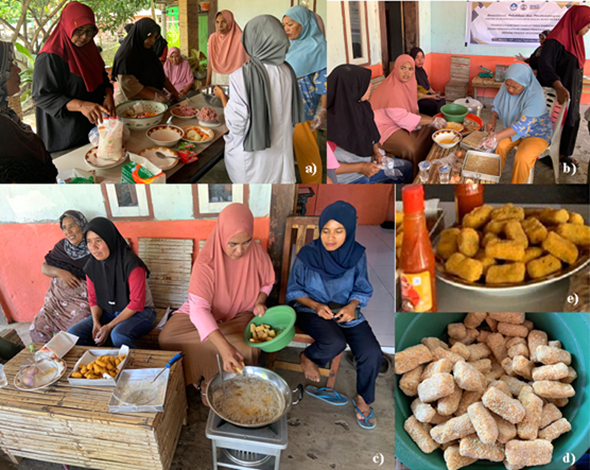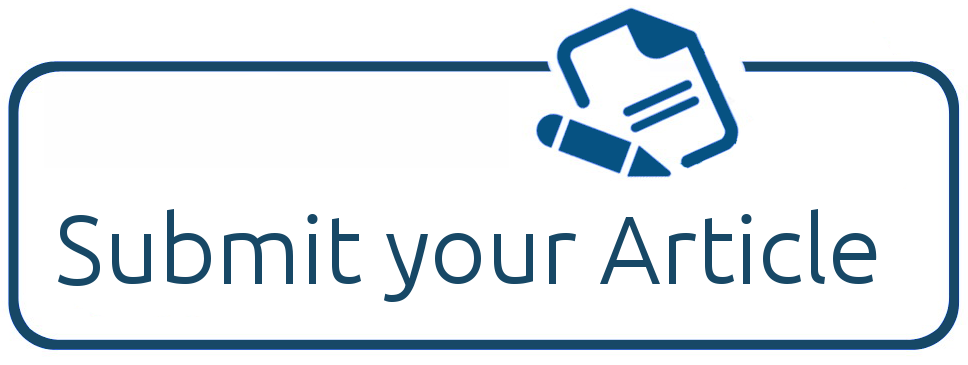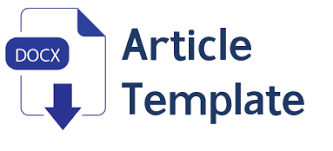PEMBERDAYAAN MASYARAKAT DALAM MEMANFAATKAN LIMBAH PRODUKSI TUNA LOIN MENJADI PRODUK EKONOMIS
Abstract
This community service activity involves PKK mothers from Sangowo Village as partners. They face the problem of a lack of knowledge regarding the processing of by-products of fisheries into goods that have economic value. Therefore, the purpose of this activity is to provide socialization, training, and assistance to improve the understanding and skills of the community in processing fishery products. This activity was carried out in Sangowo Village between July and September 2024. This PKM activity includes several stages, such as surveys and preparation, socialization of the PKM program, and training in using tools and processing of tuna loin waste. The products taught to partners include nuggets, meatballs, and sticks. The results of implementing the PKM activity show how beneficial it is for the Sangowo Village community. Partners received the material presented by the PKM team well and participated in the training with enthusiasm and seriousness. The active involvement of partners in the product manufacturing process and the provision of recipe books also contributed to the success of this training. Thus, this activity succeeded in increasing the knowledge and skills of the local community in processing fishery products, demonstrating the effectiveness of the training
Downloads
References
Akerina, F., Kour, F., Kitong, A., Armada, R., & Simange, R. (2022). Pemanfaatan Limbah Jeroan Ikan Tuna sebagai Bahan Baku Pembuatan Pakan Ikan Berdasarkan Organoleptik. Akuatikisle: Jurnal Akuakultur, Pesisir dan Pulau-Pulau Kecil, 6(2), 79-82.
Apu, R. (2021). Pemanfaatan limbah jeroan ikan cakalang (Katsuwonus pelamis) sebagai bahan subtitusi tepung ikan pada pertumbuhan ikan nila (Oreochromis niloticus). Jurnal Sains dan Teknologi Perikanan, 1(2), 13-24.
Asy’ari, Nur, R. M., Bayu, R., Wahab, I., & Muhammad, S. H. (2024). Pengelolaan Limbah Perikanan dan Partisipasi Pedagang Ikan Terhadap Sanitasi Pada Pusat Penjualan Ikan Pasar Rakyat Kabupaten Pulau Morotai. Jurnal Ilmiah Multidisiplin, 2(11), 516-529.
Buckle, K., Edwards, R., Feet, G., & Wooton, M. (1987). Ilmu Pangan (Penerjemah Hari Purnomo dan Adiono ed.). Jakata: Universitas Indonesia Prees.
FAO. (2020). The State of World Fisheries and Aquaculture 2020. Food and Agriculture Organization of the United Nations. https://doi.org/10.4060/ca9229en
Halim, A., & Rahman, F. (2023). Peran Sosialisasi dalam Meningkatkan Partisipasi Masyarakat pada Program Pengabdian. Jurnal Ilmu Sosial dan Humaniora, 8(2), 112-120.
Herlambang, C. (2022). Cerita Bahagia Para Penangkap Tuna di Morotai. Dipetik Januari 8, 2024, dari https://www.kompas.id/baca/nusantara/2022/08/11/cerita-bahagia-para-penangkap-tuna
Iqbal, M., Riza, S., Gevisioner1, Syah, S. U., Ilham, A. M., & Mastina, T. (2023). Pemanfaatan Potensi Limbah Industri Pengolahan Ikan Patin (Pangasius Sp) di Kabupaten Kampar. IPTEKIN Jurnal Kebijakan Pembangunan dan Inovasi, 6(1), 1‐12.
Juliana & Koniyo, Y. (2017). Pemberdayaan Ekonomi Perempuan Pesisir (PE2P) melalui Diversifikasi Pengolahan Produk Perikanan di Desa Iloheluma Kabupaten Gorontalo Utara. Laporan Akhir KKS Pengabdian. Lembaga Penelitian dan Pengabdian Masyarakat. Universitas Negeri Gorontalo. Gorontalo.
Khatun, M. A., Islam, M. S., & Hossain, M. M. (2020). Effects of Frying Temperature on the Quality of Fried Fish. Journal of Food Science and Technology, 57(4), 1526-1535.
Kris-Etherton, P. M., Harris, W. S., & Appel, L. J. (2002). Fish consumption, fish oil, omega-3 fatty acids, and cardiovascular disease. Circulation, 106(21), 2747-2757.
Mahendradatta, M., Rahayu, W. P., Santoso, U., Giyatmi, Ardiansyah, Fibri, D. L. N., Kusnandar, F., & Witono, Y. (2021). Inovasi Teknologi Pangan Menuju Indonesia Emas. Bogor: PT Penerbit IPB Press.
Moniharapon, T., & Pattipeilohy, F. (2016). Pemanfaatan daging merah dari limbah tuna loin dalam pengolahan kecap ikan. Majalah Biam, 12(1), 27-31.
Moranda, D., Handayani, L., & Nazlia, S. (2018). Pemanfaatan limbah kulit ikan tuna sirip kuning (Thunnus albacares) sebagai gelatin: Hidrolisis menggunakan pelarut HCl dengan konsentrasi berbeda. Acta Aquatica: Aquatic Sciences Journal, 5(2), 81-87.
Nur, R. M., Nurafni, Baide, T. N., Nur, T. M., & Paulus, H. (2022). Pemberdayaan Masyarakat Desa Galo-Galo Dalam Pengolahan Rumput Laut Menjadi Produk Manisan dan Minuman. SENTIMAS: Seminar Nasional Penelitian Dan Pengabdian Masyarakat: 551-558.
Nur, R. M., Sandria, N., Pahana, A. S., Paulus, H., Pina, M., Danopa, N., Mahamude, S. H. Y., Kobu, Y., Hasan, J., Sibua, N., & Umar, A. (2023). Pemberdayaan masyarakat Desa Daeo dalam memanfaatkan limbah produksi tuna loin menjadi produk inovatif. Journal of Khairun Community Service, 2(2), 97-107.
Pade, S., Mutsyahidan, A., & Irawan, F. (2021). Pemanfaatan Limbah Kulit Ikan Tuna Menjadi Kerupuk. Jurnal Abdimas Gorontalo, 4(1), 1-3.
Paulus, H. (2024). Karakterisasi Limbah Padat Ikan dari Tempat Penjualan Ikan di Pasar Rakyat Kabupaten Pulau Morotai. Skripsi. Fakultas Perikanan dan Ilmu Kelautan. Universitas Pasifik Morotai. Morotai.
Prabowo, H., & Setiawan, A. (2021). Pemanfaatan Limbah Perikanan untuk Meningkatkan Kesejahteraan Masyarakat Pesisir. Jurnal Sumber Daya Alam dan Lingkungan, 10(3), 201-210.
Pratama, R. I., Rostianti, I., & Kurniawati, N. (2017). Pemberdayaan Masyarakat melalui Peningkatan Keterampilan Produk Olahan Hasil Perikanan di Wilayah yang Terkena Dampak Genangan Jatigede Kabupaten Sumedang. Jurnal Pengabdian Kepada Masyarakat, 1(1), 60.
Rahman, F., & Halim, A. (2020). Dampak Pelatihan Terhadap Keterampilan Pengolahan Hasil Perikanan. Jurnal Pengabdian Masyarakat Berbasis Penelitian, 3(1), 89-95.
Rahman, M. S. (2014). Antimicrobial and Anti-Inflammatory Properties of Garlic. Journal of Medicinal Food, 17(10), 1010-1018.
Rahmawati, & Setyawati, B. (2022). Pemanfaatan limbah jeroan ikan bandeng (Chanos chanos) untuk pembuatan struvit sebagai pupuk dengan mode lepas lambat (slow released fertilizer). Laporan Penelitian. Universitas Sultan Ageng Tirtayasa. Dipetik Maret 2, 2024, dari https://eprints.untirta.ac.id/17246/1/Rahmawati_3335180037_01.pdf
Ratiandi, Redi. R., Imansyah, F., & Mooniarsih, N. T. (2020). Pengolahan Limbah Ikan Menjadi Produk Ber nilai Ekonomis Tinggi dengan Sentuhan Teknologi Tepat Guna Mesin Pembuat Tepung Ikan. JURNAL PENGABDI, 3(1), 51-64.
Sari, R., & Prabowo, H. (2022). Penguatan Kapasitas Masyarakat Melalui Program Pengabdian kepada Masyarakat. Jurnal Pengabdian Masyarakat, 5(1), 45-58.
Savell, J. W., Mueller, S. L., & Baird, B. E. (2005). The chilling of carcasses. Meat Science, 70(3), 449-459.
Sinha, A., Gupta, S., & Bhargava, A. (2018). Health Benefits of Black Pepper: A Review. Journal of Food Science and Technology, 55(2), 404-413.
Sofia, L. A. & Yunita, R. (2021). PKM Diversifikasi Produk Olahan Berbasis Ikan Patin bagi Poklahsar Al Khalifi. Pro Sejahtera (Prosiding Seminar Nasional Pengabdian kepada Masyarakat) LPPM ULM. 3(1).
Spence, C., & Piqueras-Fiszman, B. (2014). The perfect bite: A review of the literature on the role of food texture and shape in the multisensory perception of food. Food Quality and Preference, 31, 130-140.
Suarsa, I., Bawa, P., Santi, S., & Faruk, A. (2020). Produksi Tepung Tulang Ikan Tuna (Thunnus sp) dengan Metode Kering sebagai Sumber Kalsium dan Fosfor untuk Pembuatan Biskuit. JIPI, 8(1), 19-28.
Widowati, S. (2003). Prospek Sukun (Artocarpus communis) sebagai Pangan Sumber Karbohidrat dalam Mendukung Diversivikasi Konsumsi Pangan. Majala Pangan, 56/XVII/.
Yulianti, D., & Sari, R. (2021). Pelatihan Pengolahan Hasil Perikanan untuk Meningkatkan Pendapatan Masyarakat. Jurnal Ekonomi dan Pembangunan, 12(1), 67-75.
Zhang, Y., Li, Y., & Wang, X. (2021a). Effects of Breading on the Quality of Fried Meat Products. Journal of Food Science, 86(2), E388-E396.
Zhang, L., Li, M., & Zhao, Y. (2021b). Impact of grinding process on the quality of meat products: A review. Meat Science, 178, 108556. https://doi.org/10.1016/j.meatsci.2021.108556

Copyright (c) 2025 PAKEM : Jurnal Pengabdian Kepada Masyarakat

This work is licensed under a Creative Commons Attribution-NonCommercial-ShareAlike 4.0 International License.
Authors who publish with PAKEM: Jurnal Pengabdian Kepada Masyarakat agree to the following terms:
- Authors grant copyright to the journal and right of first publication with the work simultaneously licensed under a Creative Commons Attribution License (CC BY-NC-SA 4.0)
- Authors are able to enter into separate, additional contractual arrangements for the non-exclusive distribution of the journal's published version of the work (e.g., post it to an institutional repository or publish it in a book), with an acknowledgment of its initial publication in this journal.
- Authors are permitted and encouraged to post their work online (e.g., in institutional repositories or on their website) prior to and during the submission process, as it can lead to productive exchanges, as well as earlier and greater citation of published work.

.jpg)













